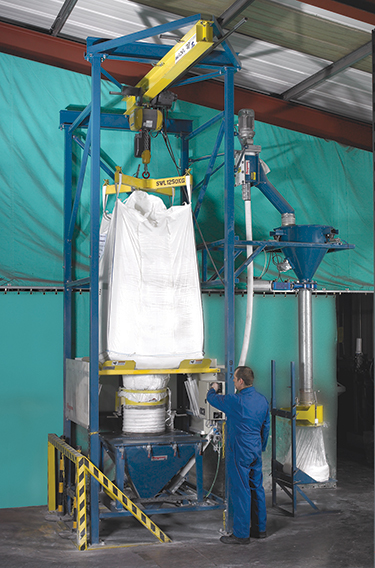 Click to enlarge
Click to enlargeA bulk bag is mounted in the frame, ready to discharge clay into the receiving hopper via the TELE-TUBE® assembly
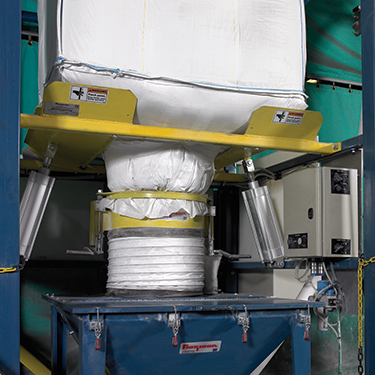 Click to enlarge
Click to enlargeThe SPOUT-LOCK® clamp ring and TELE-TUBE® telescoping tube allow a quick, dust-tight connection between the bag spout and the hopper and elongate the bag as it empties, thereby promoting flow
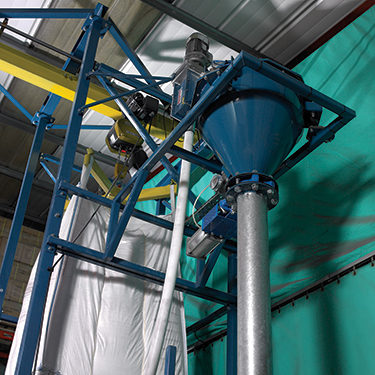 Click to enlarge
Click to enlargeA flexible-screw conveyor (the narrow tube in the middle of the photo) transfers product to the weigh hopper, which is mounted on load cells that transmit gain-in-weight information to the control panel
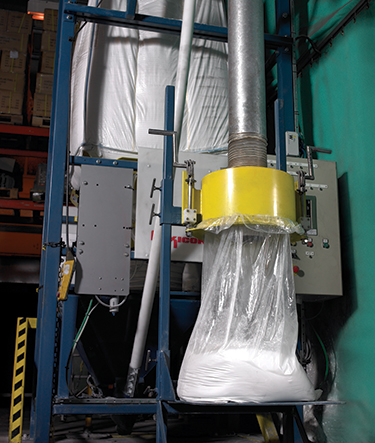 Click to enlarge
Click to enlargeWhen the weigh hopper reaches its target weight, the batch of clay is discharged into a bag and taken to the blender
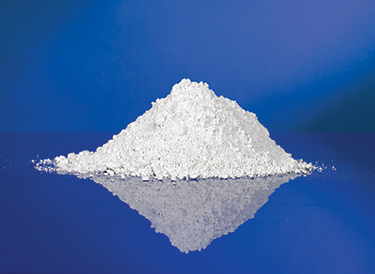 Click to enlarge
Click to enlargeChina clay makes a pretty reflection in repose, but can cause airborne dust when it is transferred in the open
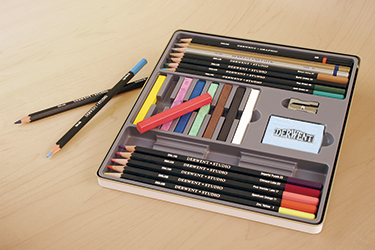 Click to enlarge
Click to enlargeA sample of Cumberland's Derwent pencils

